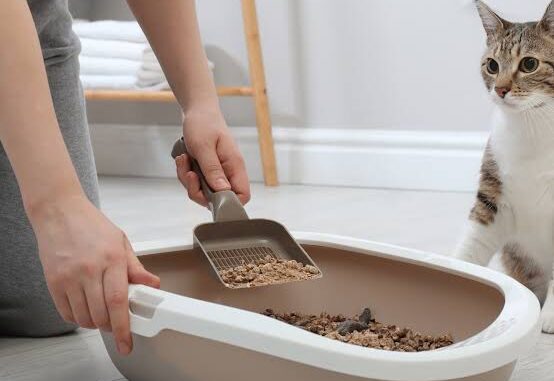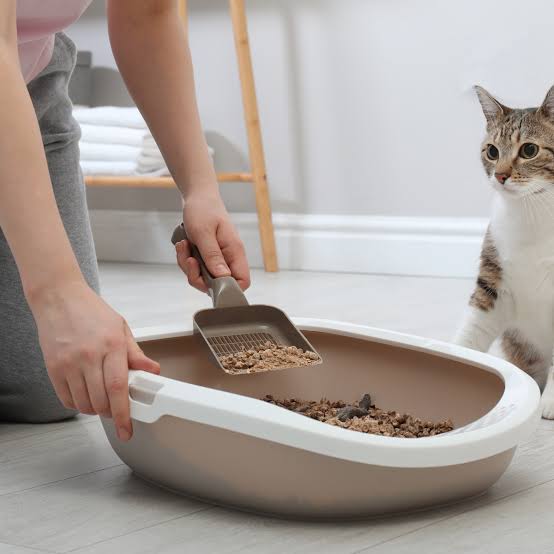
The Best Eco-Friendly Cat Litter Options: For cat owners who care about sustainability, switching to an eco-friendly cat litter is one of the simplest and most impactful choices you can make. Traditional clay-based litters, especially those made from sodium bentonite, are often strip-mined and non-biodegradable, meaning they pose long-term environmental concerns.

In contrast, eco-friendly litters are made from renewable, biodegradable, and often compostable materials that minimize your carbon pawprint.
But not all eco-friendly litters are created equal. Some are better at odor control, while others clump more efficiently or are softer on kitty paws. In this guide, we’ll explore the top sustainable cat litter types, their pros and cons, and how to choose the best option for your feline and your home.
Why Choose Eco-Friendly Cat Litter?
Before diving into the best products, let’s look at why making the switch is a responsible and practical decision:
1. Environmental Impact
Traditional clay litters contribute to habitat destruction through strip mining. They’re not biodegradable and often end up in landfills. Eco-friendly alternatives are typically made from recycled or renewable materials like corn, paper, or wood.
2. Healthier for Pets and People
Natural litters often contain fewer chemicals and are less dusty—beneficial for cats with respiratory issues or humans with allergies.
3. Waste Reduction
Many green litters are compostable or flushable (with local guidelines in mind), offering better waste management options.
4. Odor Control Without Fragrance
Eco-litters typically avoid synthetic perfumes and instead rely on natural materials for odor absorption, making them ideal for sensitive noses.
Types of Eco-Friendly Cat Litter
1. Recycled Paper Litter
Material: Compressed recycled paper pellets or crumbles
Best for: Kittens, post-surgical cats, respiratory issues
Pros:
- Soft on paws
- Dust-free
- Highly absorbent
- Often the most affordable eco option
Cons:
- Doesn’t clump well
- Less effective at odor control over time
Top Pick: Yesterday’s News by Purina – Trusted for its soft texture and zero-dust formula.
2. Wood-Based Litter
Material: Pine, cedar, or recycled sawdust
Best for: Households with odor sensitivity
Pros:
- Naturally deodorizing
- Biodegradable and compostable
- Available in pellets or granules
Cons:
- Pine pellets may not clump
- Some cats dislike the texture
- May require frequent scooping to maintain freshness
Top Pick: Feline Pine – Offers excellent odor control without artificial additives.
3. Corn-Based Litter
Material: Ground corn or corn kernels
Best for: Multi-cat households needing clumping action
Pros:
- Excellent clumping
- Flushable (check local guidelines)
- Light and easy to carry
Cons:
- Can attract insects if not stored properly
- Slightly higher cost
- Some cats might be tempted to eat it
Top Pick: World’s Best Cat Litter – Renowned for its clumping ability and low dust levels.
4. Wheat-Based Litter
Material: Ground wheat and starches
Best for: Owners who want clumping with a natural scent
Pros:
- Clumps well
- Naturally neutralizes odor
- Compostable
Cons:
- May not control odor as long as other types
- Mold risk if not kept dry
- Not suitable for cats with grain allergies
Top Pick: sWheat Scoop – Well-loved for its balance of performance and sustainability.
5. Coconut-Based Litter
Material: Coconut husks and shells
Best for: Allergy-prone homes
Pros:
- Naturally antimicrobial
- Low dust and lightweight
- Renewable and biodegradable
Cons:
- May need more frequent changing
- Higher cost
- Limited availability
Top Pick: CatSpot Coconut Litter – 100% coconut, lightweight, and compostable.
6. Grass Seed Litter
Material: Ground grass seed
Best for: Natural clumping and odor control
Pros:
- Fast clumping
- Light and soft on paws
- Biodegradable and flushable
Cons:
- Expensive compared to other eco litters
- May track easily
- Limited brand options
Top Pick: SmartCat All Natural Litter – A premium pick for excellent clumping and odor control.
READ ALSO: 10 Tips for Keeping Your Dog’s Paws Healthy
What to Consider When Choosing Eco-Friendly Litter
1. Clumping vs. Non-Clumping
Clumping litters make daily scooping easier but may contain added starches. Non-clumping types may need full litter changes more frequently.
2. Odor Control
Look for litters that naturally absorb odor (like wood or corn). Avoid chemical deodorizers if your cat is sensitive.
3. Texture and Feel
Some cats dislike coarse pellets. If your cat refuses to use the litter box after switching, consider a finer-grain or softer alternative.
4. Dust and Tracking
Eco-litters tend to be lower in dust, but tracking varies. Pellets tend to track less but may be bulky.
5. Compostability and Flushability
Only flush litter if it’s certified flushable and your local sewer system allows it. Never flush litter if you live in a region with waterway-sensitive species like sea otters (toxoplasmosis risk).
Tips for Switching to Eco-Friendly Litter
Changing litter suddenly can confuse or deter cats. Use a gradual transition:
- Mix 25% new litter with 75% old.
- Over a week or two, increase the new and reduce the old.
- Monitor your cat’s behavior. If they refuse the box, slow the transition or try another eco-litter.
Keep boxes clean, scoop daily, and replace all litter as recommended by the brand.
FAQs
Is eco-friendly cat litter safe for kittens?
Yes, but some litters like corn or wheat may tempt kittens to taste it. Recycled paper litters are often recommended for young or post-surgery cats due to their softness and safety.
Can I compost cat litter?
Some biodegradable litters can be composted, but not if the litter contains cat feces and the compost is used for edible plants. A separate compost for ornamental gardening is safest.
Are flushable cat litters really safe for plumbing?
Many are marketed as flushable, but this depends on your local plumbing system. In general, avoid flushing litter in areas where parasites like Toxoplasma gondii could impact wildlife.
Do eco-friendly litters control odor as well as clay?
Some do, especially pine and corn-based litters. However, natural litters often require more frequent scooping to match the odor control of clumping clay litters.
How do I store eco-friendly litter to prevent pests?
Keep litter in a sealed container in a cool, dry place. Corn and wheat-based litters can attract pantry pests if not properly stored.
What if my cat refuses to use the eco-friendly litter?
Try a different texture or scent. Some cats dislike strong wood smells or coarse pellets. Gradual transitions and positive reinforcement can help.
Leave a Reply
You must be logged in to post a comment.